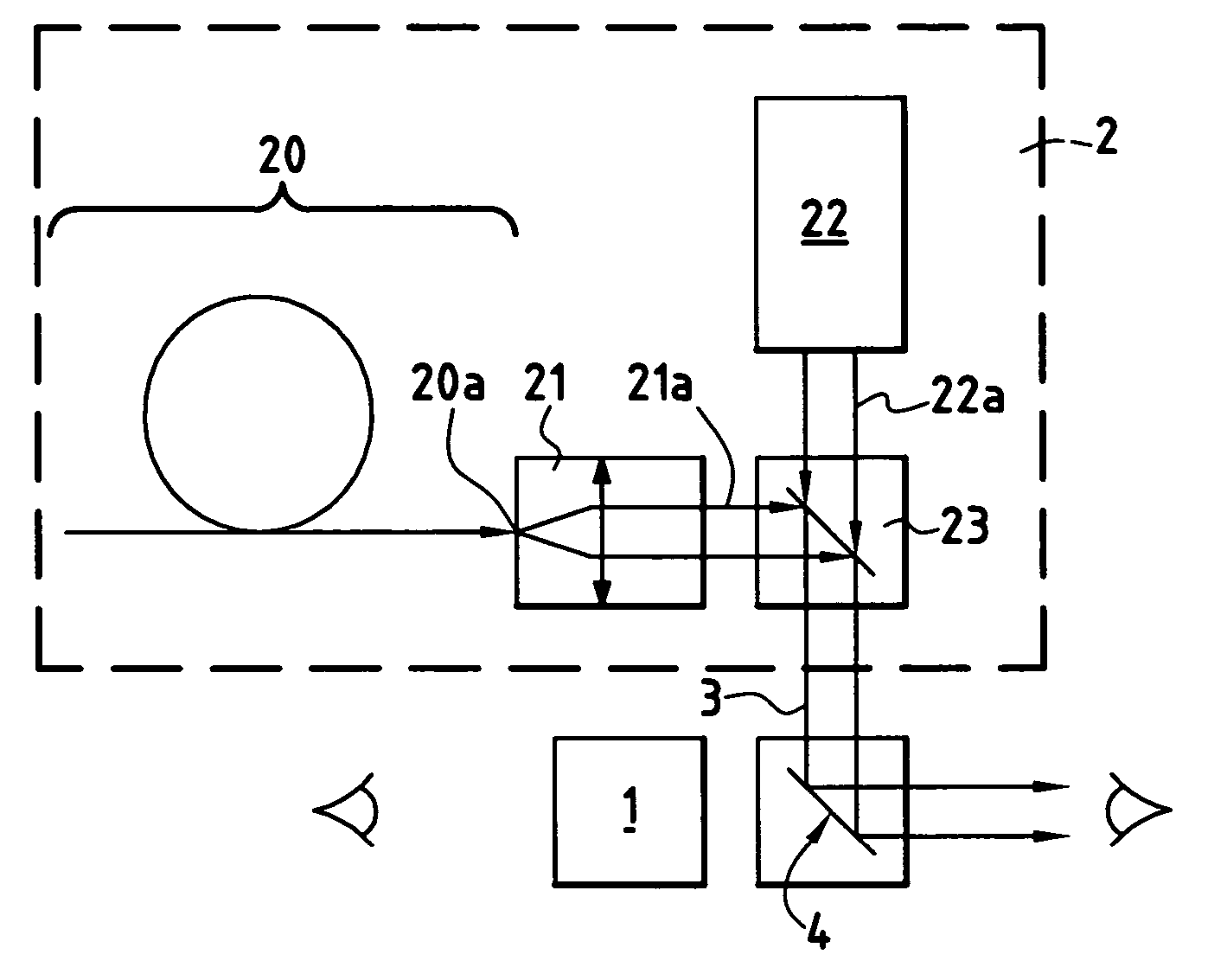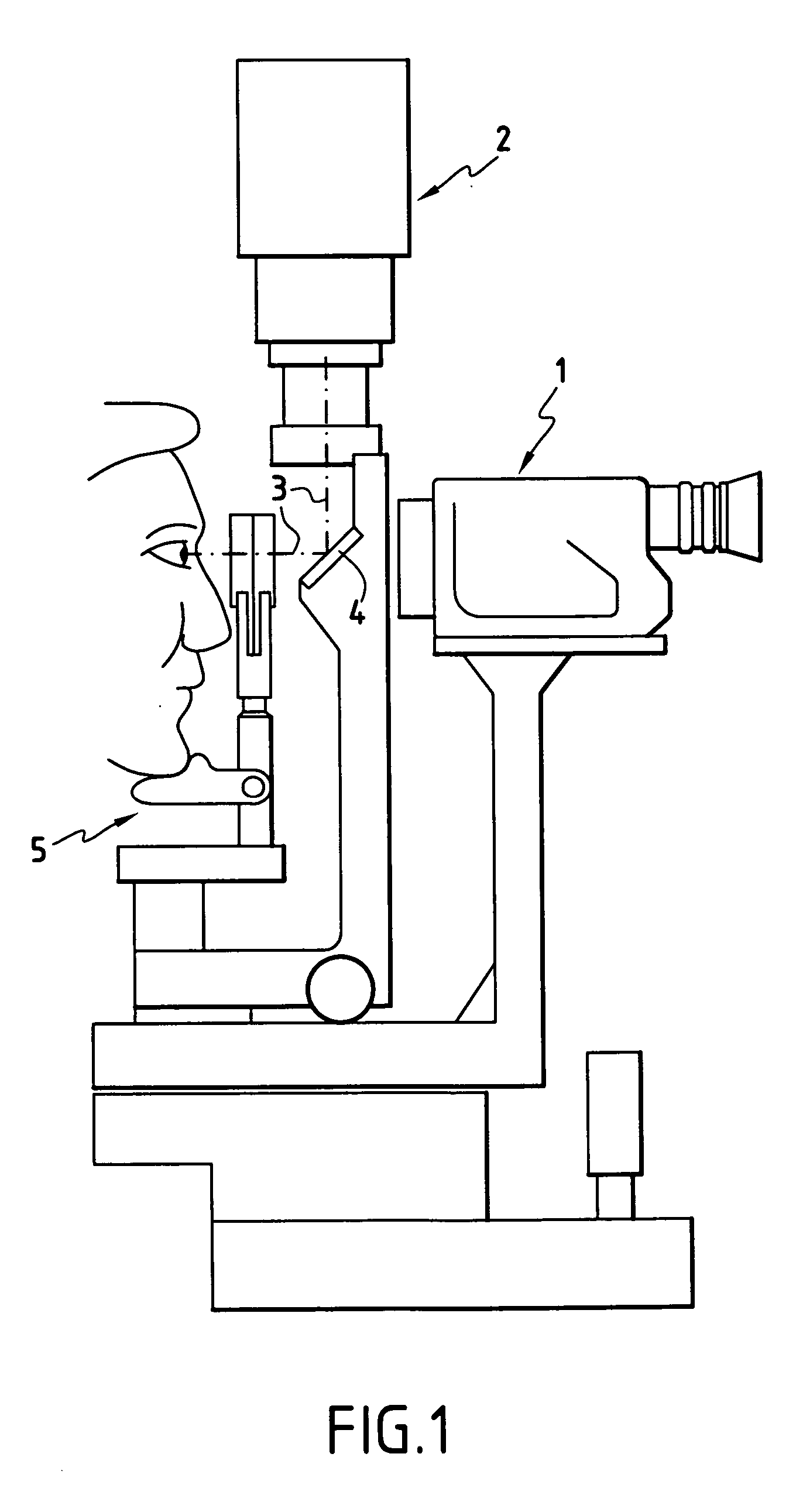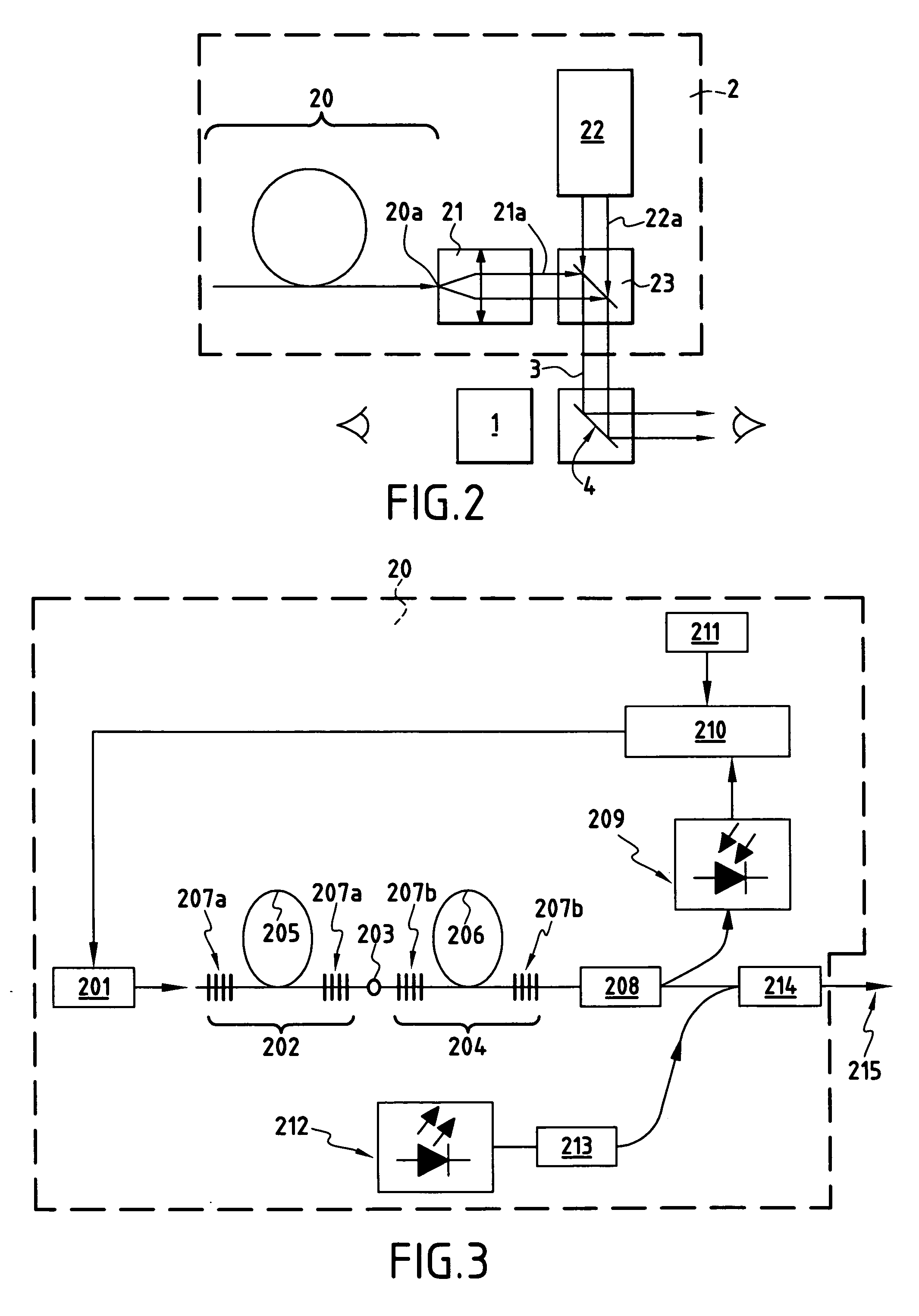Apparatus for treating age-related maculopathy (arm)
a technology for arm and arm, applied in the field of arm arm arm apparatus, can solve the problems of progressive loss of macular vision cells, increased frequency of armd cases, and severe vision threa
- Summary
- Abstract
- Description
- Claims
- Application Information
AI Technical Summary
Benefits of technology
Problems solved by technology
Method used
Image
Examples
Embodiment Construction
[0034]FIG. 1 shows an embodiment of apparatus of the invention for treating ARMD, which apparatus is of the slit-lamp type.
[0035] In the usual manner for slit-lamps, this apparatus essentially comprises: [0036] an optical unit 1 enabling a practitioner to observe the eye being treated; [0037] a treatment unit 2 serving to generate a light beam 3, which beam is directed vertically on leaving the treatment unit 2, in the present example; [0038] a mirror 4 for deflecting the light beam 3 through 90° so that it propagates horizontally on the same optical axis as the optical observation axis of the optical unit 2; and [0039] means 5 of the chin-rest type for positioning the patient's head relative to the optical unit 1 and the light beam 3, and thus positioning the eye that is to be treated.
[0040] With reference to FIG. 2, the treatment unit 2 comprises a therapeutic light source 20 and a conventional light source 22 for illuminating the eye (standard illumination lamp). The therapeuti...
PUM
 Login to View More
Login to View More Abstract
Description
Claims
Application Information
 Login to View More
Login to View More - R&D
- Intellectual Property
- Life Sciences
- Materials
- Tech Scout
- Unparalleled Data Quality
- Higher Quality Content
- 60% Fewer Hallucinations
Browse by: Latest US Patents, China's latest patents, Technical Efficacy Thesaurus, Application Domain, Technology Topic, Popular Technical Reports.
© 2025 PatSnap. All rights reserved.Legal|Privacy policy|Modern Slavery Act Transparency Statement|Sitemap|About US| Contact US: help@patsnap.com



